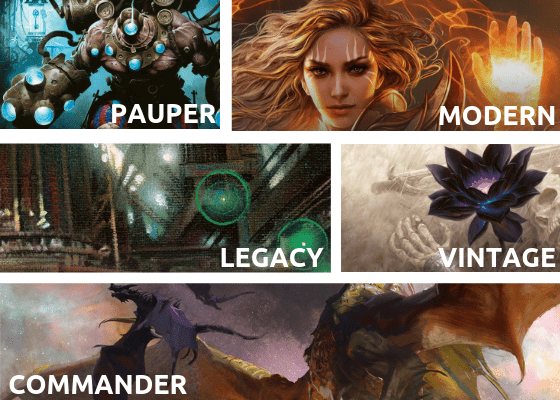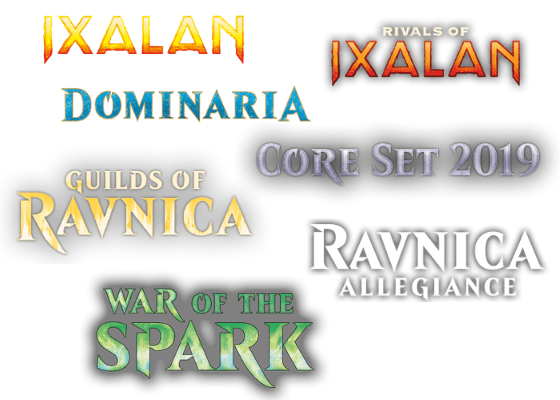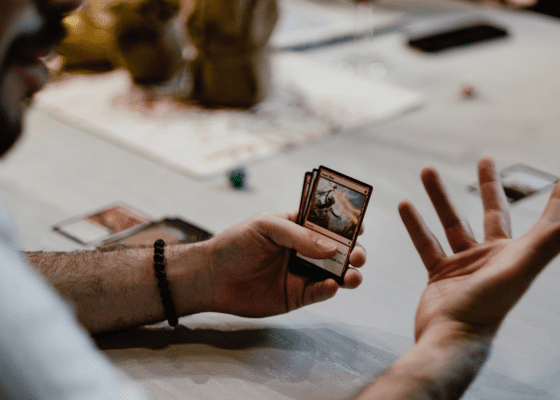A Beginners Guide To Magic: The Gathering, Part 2: Which Format Do I Choose?
In last week’s article, you began your new journey into the Magic: The Gathering world.
This process began with going over the various color combinations that represent the game and what their strengths are, hoping that you would find a color / combination that best suits your interest.
After choosing which color you are going to venture into, the next part of your journey will be learning the various Magic: The Gathering formats and choosing which one you would like to participate in.
Magic: The Gathering Formats
The amazing thing about Magic: The Gathering and what has given it such longevity, is first and foremost just how dynamic the game is.
This is enabled by a myriad of cards that can interact with each other. Tens of thousands of cards have been printed since Magic: The Gatherings inception and thus, there are nearly infinite possibilities within the game.
However this, as to be expected, can lead to some crazy scenarios and very broken situations. Thus the formats were born and card pools were created.
Magic: The Gathering formats limit the card pool that players are allowed to include in their decks. This creates much fairer games, while still allowing access to a massive amount of cards to deck build with.
To name a few of the constructed formats, we have the following;
This is followed by a number of limited formats, such as;
- Sealed Deck
- Booster Draft
- Rochester Draft
Read more about each of these formats here.
Note that these are just SOME of the Magic: The Gathering formats that you can play, as there are even more casual and multiplayer formats that players enjoy.
This just gives you an example of how much gameplay you can enjoy when engaging with Magic: The Gathering and if this many formats daunt you as a new player, worry not!
The vast majority of new Magic: The Gathering players begin their journey with just one format, that being the most common and most played format that is heavily promoted and marketed by Wizards of the Coast, the Standard format and is thus the format that we will delve deeper into.
What is the Standard Format?
Magic: The Gathering Standard format, also sometimes referred to as “Type 2”, is a Constructed format, in which you create a minimum 60 card deck.
The Standard format is compiled of typically the latest core set, along with the two most recent expansion blocks.
In addition to a 60 card deck of your choice, you also have the option of a 15 card “sideboard”, in which you can switch cards in and out of your deck, between games.
Competitively games are played as a best of three, however, casually, this is not always the case.
The amazing thing that makes the Standard format so fun and enjoyable, is the fact that it is always evolving and changing as new sets are released and old sets are cycled out of the format.
Currently, the sets legal in the Standard format are as follows;
Rotation does not happen immediately when a new set is released, but rather in blocks. Rotating out of standard in Q4 2019 are Ixalan, Rivals of Ixalan, Dominaria and Core Set 2019.
While Guilds of Ravnica, Ravnica Allegiance and War of the Spark all rotate out of standard in Q4 2020.
This means that typically, if you are just starting out, that your best “bang for your buck”, will be investing in cards from one of the more recent sets.
Fortunately if you are just starting out, Guilds of Ravnica, Ravnica Allegiance and War of the Spark are all amazingly powerful sets that are redefining the format.
Exploring the Cards in the Standard Format
Now that you have settled on a color combination and have most likely decided to start your Magic: The Gathering journey in the Standard legal format, your next step will be in picking out which cards to include in your deck.
As previously mentioned above, the Standard format is currently compiled of the seven most recently released sets, but where can you find all the cards included in these sets?
Luckily, there are a plethora of websites built around making your Magic: The Gathering experience that much more enjoyable, with one of the most notable ones being “Scryfall”.
Scryfall has a learning process, but is incredibly easy to use after you spend a few minutes browsing its features. Fortunately, once you learn it, it is an invaluable deck building tool.
For ease of use, simply visit here to view each and every card currently legal in the MTG Standard format.
This link will update automatically as new sets are released and old sets are rotated out of the Standard format.
Take your time, look at the large selection of cards and soak in the beautiful artwork that has made Magic: The Gathering the marvel that it is to collectors across the world.
In Conclusion
Our journey continues onward! Progress has been made and we have begun the process of picking the cards for our first ever Magic: The Gathering 60 card deck!
You have hopefully chosen a color and we have chosen to explore the Standard legal format, the most played and most likely starting point for any new playing just getting into Magic: The Gathering.
The next step in the process is compiling your deck, choosing the cards and learning about what a good average deck consist of.
This will be the next part of the journey and the topic of focus in Part 3 of our Magic: The Gathering Beginners guide.


